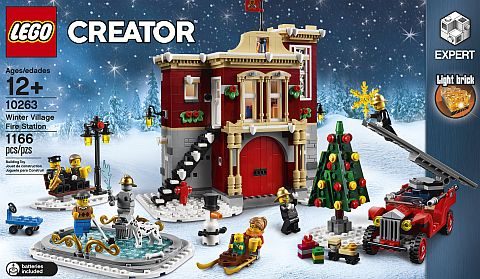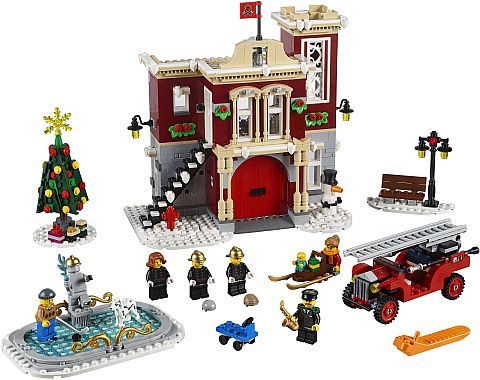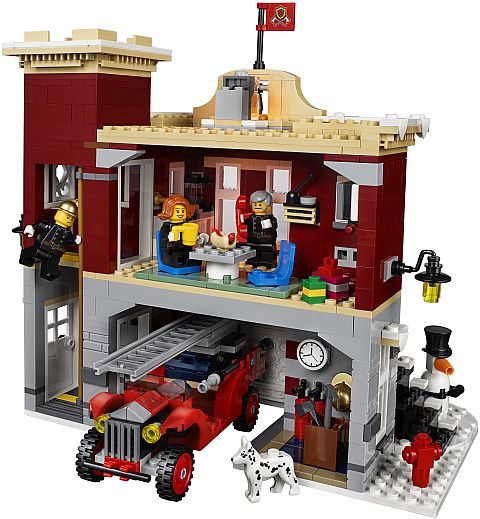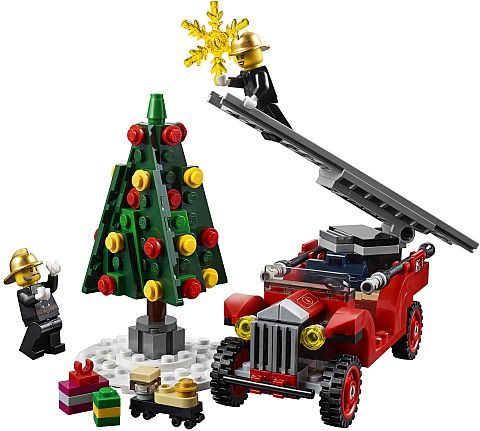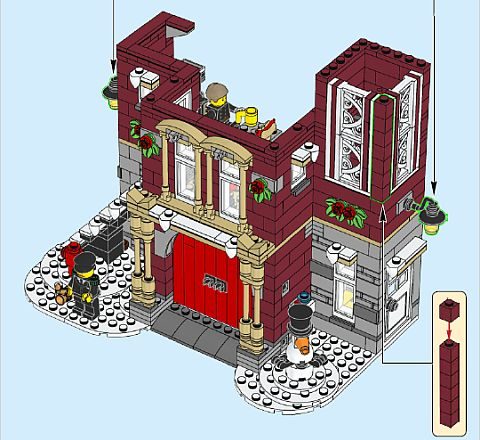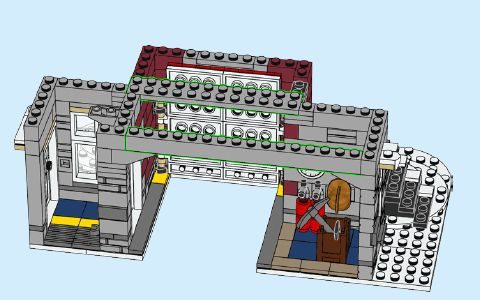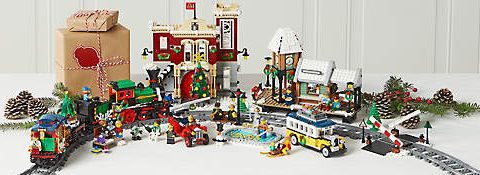LEGO is running a couple of specials right now that weren’t announced at the beginning of the month when we talked about the November 2018 – New LEGO Sets & Promotions, so I wanted to make sure you are aware of them. 🙂

➡ FREE LEGO HARRY POTTER DIAGON ALLEY SET: From now until November 21st, you will get a free #40289 LEGO Harry Potter Diagon Alley set with purchases of $99 or more. With 374 pieces, this set is quite substantial, depicting a micro-scale version of some of the shops at Diagon Alley, including Gringotts Wizarding Bank, Ollivanders, Flourish & Blotts, Quality Quidditch Supplies, and Weasleys’ Wizard Wheezes. The set also includes an exclusive Mr. Garrick Ollivander minifigure. Another exclusive in this set is the six 2×4 printed tiles with cobblestone pattern. These are extremely useful in LEGO town and castle creations. The parts-selection is also very nice with lots of decorative small parts and interesting colors. This is one of the nicest free-with-purchase sets we got in a while, so if you are interested, visit the Online LEGO Shop.

➡ LEGO DOUBLE VIP POINTS: While the storewide Double VIP Points offer is now over, LEGO continues to offer Double VIP Points on two of the most desirable sets for the holiday season; the #71043 LEGO Harry Potter Hogwarts Castle, and the #10263 LEGO Winter Village Fire Station. This offer is valid during the entire month of November at official LEGO stores and the Online LEGO Shop.

➡ LEGO OVERWATCH SETS PREORDER: To help with managing inventory, LEGO has been offering pre-sales on a couple of the most desirable new sets. This strategy seems to be working well for them, so now they are offering pre-sales on an entire new theme, LEGO Overwatch. This is the longest time period for a pre-sale, as the sets won’t be available until January. Still, by ordering them now, you can make sure you are one of the first people to receive them. The LEGO Overwatch theme includes six sets; the #75970 LEGO Overwatch Tracer vs. Widowmaker, the #75971 LEGO Overwatch Hanzo vs. Genji, the #75972 LEGO Overwatch Dorado Showdown, the #75973 LEGO Overwatch D.Va & Reinhardt, the #75974 LEGO Overwatch Bastion (my favorite!), and the #75975 LEGO Overwatch Watchpoint: Gibraltar. The sets seem to be pretty basic, but the minifigures are amazing! You can find them at the LEGO Overwatch section of the Online LEGO Shop.


➡ LEGO IDEAS POP-UP BOOK AVAILABLE: Also, remember that the beautiful #21315 LEGO Ideas Pop-Up Book is now available! We have talked about this set extensively including modifications and upgrades by the original creator of the set (see links at the end of this post), so here I will only copy the official description for your reference: Build, play and display the classic fairy tales Little Red Riding Hood and Jack and the Beanstalk with the #21315 LEGO Ideas Pop-up Book! This first-ever buildable pop-up book made from LEGO bricks opens to reveal the famous scene of grandmother’s forest cottage featuring opening door, bed and kitchen area. Recreate the scene when Little Red Riding Hood meets the wolf, or swap out grandmother’s cottage for the scene of the giant’s castle in the clouds. This collectible toy features enough bricks to build both scenes, or you can even build a scene of your own and makes a perfect creative gift. This LEGO set includes a booklet with a short history of pop-up books, a condensed history of each fairy tale in the set, as well as information about its fan designers and LEGO designers. Includes 4 new-for-November-2018 LEGO minifigures: Little Red Riding Hood, Grandmother, the Wolf, and the Giant. Also includes 1 new-for-November-2018 microfigure: Jack. Pop-up book measures over 7” (20cm) long and 5” (13cm) wide when closed, and over 11” (28cm) wide when open. 859 pieces. Price: $69.99 – BUY HERE
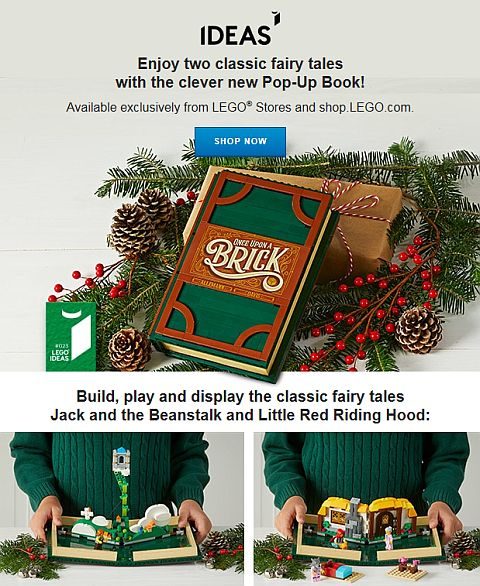
As we discussed previously, the LEGO Holiday Gift Shop is now open, which is a great place to find everything from small stocking stuffers and holiday-themed sets, to some of the most popular and sought after exclusives. Sets are organized into various categories, so it’s easy to find gifts for LEGO fans with different building styles and interests. You can access the LEGO Holiday Gift Shop through the homepage of the Online LEGO Shop.
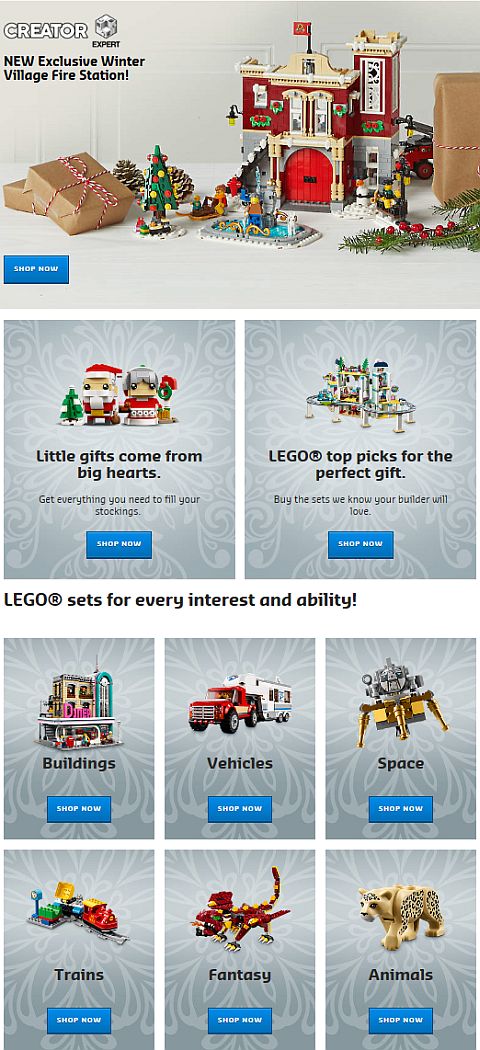
What do you think? Are you planning to take advantage of the free gift offer, the Double VIP Points, or the pre-order of the LEGO Overwatch sets? Feel free to share and discuss in the comment section below! 🙂
And you might also like to check out the following related posts:
- LEGO Ideas Pop-Up Book Videos & More!
- Exclusive LEGO Overwatch Bastion Set Review
- LEGO Harry Potter Hogwarts Castle Review
- LEGO Harry Potter Sets Overview & Thoughts
- November 2018 – New LEGO Sets & Promotions
➡ LEGO SHOP IN USA: Online LEGO Shop USA
➡ LEGO SHOP IN CANADA: Online LEGO Shop Canada
➡ LEGO SHOP IN UK: Online LEGO Shop UK


